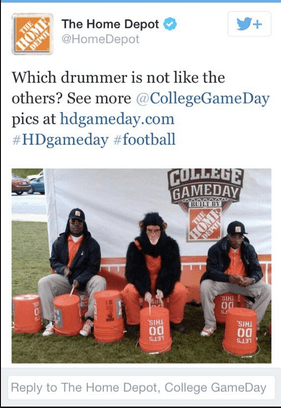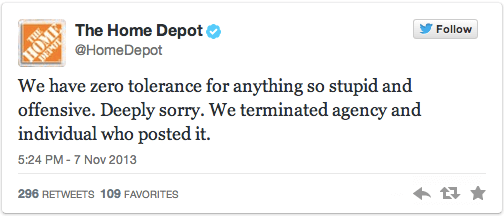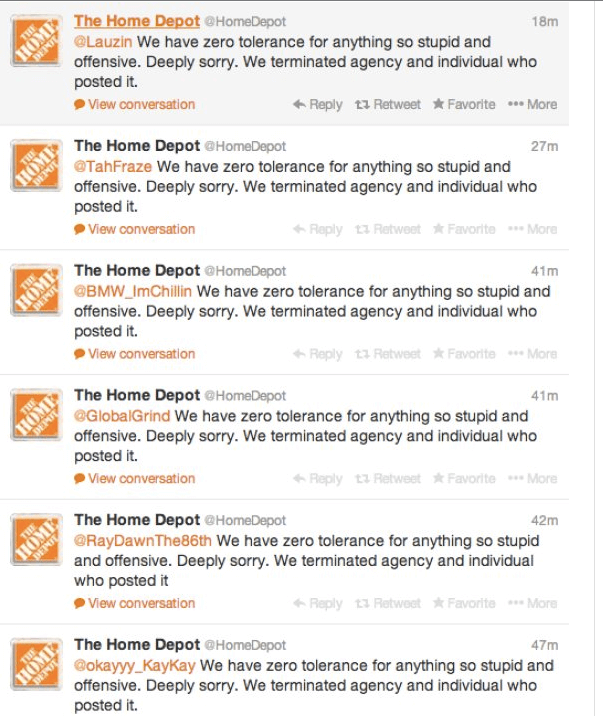By Gini Dietrich
Last Thursday, Home Depot did some clean-up after an offensive tweet went out from their account.
Sponsors of College GameDay on ESPN, the tweet was meant to drive some engagement and have some fun.
Instead, it was racist and insulting.
The corporation’s main account tweeted, “Which drummer is not like the other?” and accompanied a photo of two African-American men flanking a man wearing a gorilla mask.
Now look. Monkeys are my favorite animal. When they do human things, it makes me laugh. But the person who thought this was a good idea needs to have their head examined.
In fact, the person (and the agency where they work) was fired.
Home Depot did many of the right things: They deleted the tweet, they issued an apology, they tweeted influential accounts, including the NAACP.
Fireable Offense?
Firing the agency can be widely debated, but I think that’s a bit severe.
After all, those of us who help clients manage social media accounts know something like that would never have been tweeted without approval from Home Depot.
It’s very, very rare an agency – and someone who works there – would tweet something without client approval (minus the mistaken tweet from a corporate account instead of the personal one).
But something like this? It was planned as part of the corporation’s sponsorship of College GameDay, which leads me to believe it was approved.
So firing the agency seems like a punishment that far succeeds the crime.
But that’s not really my problem with the whole thing.
My problem is what they did next.
Social Media Requires Being Human
They forgot to be human.
Up to the apology tweet, they did everything right. And then this happened.
I understand they were probably reticent to let anyone tweet without a pre-approved message, but that undos everything they did right before this.
Tweeting the same message to every, single person makes it look like a robot – rather than a human being – is in charge.
It’s not easy. It probably would have taken hours upon hours to get through all of the tweets (and Facebook posts) without the copying and pasting job. But it would have been human.
It certainly is a lot easier to copy/paste, copy/paste, copy/paste, but when you look at the stream above (which is how their account looked for days), how does it make you feel?
Does it give you confidence they know what they’re doing and they’re truly sorry or does it feel disingenuous?
Crisis Communications for Home Depot
There are many things you can learn from this example – both right and wrong.
- The Right. They deleted the tweet immediately. They issued an apology. They made a decision to fire the agency. They communicated that decision. They tweeted to influencers and journalists ahead of the story. They had a spokesperson ready to take interviews. They quickly told their story. All of these things were done very, very well.
- The Wrong. When something like this happens to you or one of your clients (and it’s highly likely it will), remember to be human in your social media outreach. This is the only thing Home Depot did wrong. It takes more time. You’ll be typing for hours and hours. You may have to gain approval to write apologies customized to each person, but that will go a lot further than the copy and paste job Home Depot did.
All in all, this story flamed out fairly quickly because it was handled so well.
But if there is one thing to take away from how Home Depot handled it all, remember to be human.



